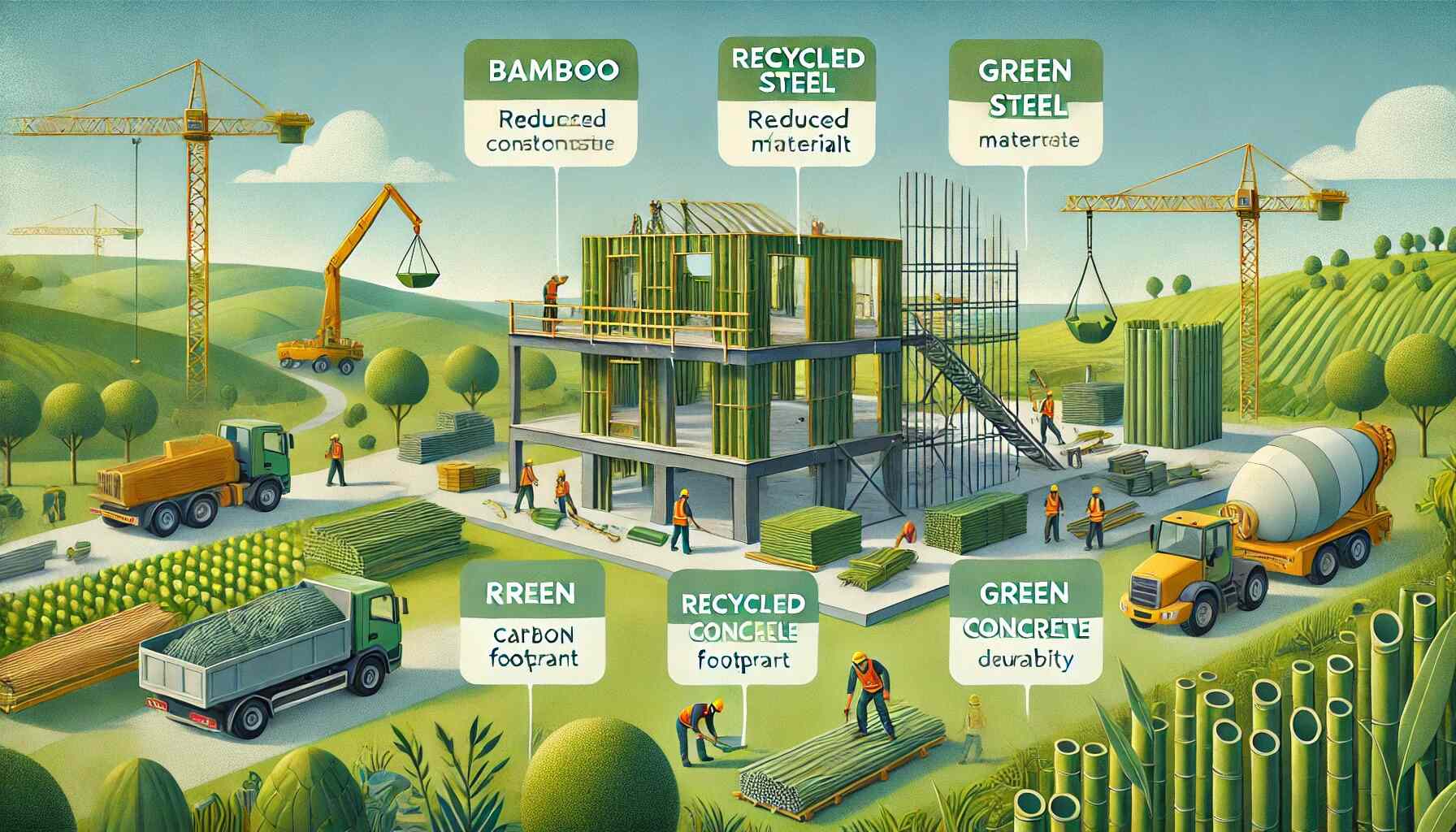Benefits of Sustainable Materials in Construction offer a wide range of benefits spanning environmental, economic, and social dimensions. Here’s a detailed look at the advantages they provide
Environmental Benefits
- Reduction in Resource Depletion:
Sustainable materials are often sourced from renewable resources or recycled materials, reducing the strain on finite natural resources. For instance, bamboo regenerates much faster than hardwood trees, making it a more sustainable choice. - Lower Carbon Footprint:
These materials generally have a smaller carbon footprint compared to traditional materials. For example, using recycled metals requires significantly less energy than producing new metal from ore, leading to reduced greenhouse gas emissions. - Waste Minimization:
Sustainable materials often come from reclaimed or recycled sources, which helps in reducing construction waste. This practice diverts usable materials from landfills and lessens the environmental impact associated with waste disposal. - Improved Indoor Air Quality:
Many sustainable building materials are designed to be low in volatile organic compounds (VOCs) and other harmful chemicals. This means they contribute to better indoor air quality, reducing health risks for occupants.
Economic Benefits
- Lower Operating Costs:
Buildings constructed with sustainable materials often have enhanced energy efficiency. Insulated concrete forms (ICFs), for example, provide superior thermal insulation, which can lead to significant savings on heating and cooling costs over the building’s lifespan. - Durability and Longevity:
Many sustainable materials are designed to last longer and require less maintenance. For example, recycled metal and composite materials can be more resistant to weather and wear, reducing the need for frequent repairs and replacements. - Increased Property Value:
Sustainable buildings are becoming increasingly popular in the real estate market. Properties with green certifications or those constructed with sustainable materials often have higher resale values and can attract eco-conscious buyers or tenants. - Tax Incentives and Funding Programs:
Governments and organizations around the world are offering incentives, grants, and tax breaks to encourage the adoption of sustainable building practices. These financial incentives can offset initial costs and provide long-term economic benefits.
Social Benefits
- Enhanced Comfort and Health:
The use of sustainable materials often leads to better overall building environments. Improved air quality, natural lighting, and better thermal insulation contribute to healthier and more comfortable living and working conditions. - Community and Global Impact:
Sustainable construction supports broader ecological and societal goals. By reducing environmental degradation and supporting the use of local and ethical resources, these practices benefit communities and ecosystems on a global scale. - Innovation and Job Creation:
The shift towards sustainable building materials fosters innovation in the construction industry. It can lead to the development of new construction techniques and create job opportunities in the research, production, and implementation of these materials. - Future-Ready Infrastructure:
Buildings made with sustainable materials are often designed with future needs in mind. They tend to be more adaptable to changes in climate and societal demands, ensuring that they remain functional and relevant over the long term.
Aesthetic and Design Benefits
- Unique Visual Appeal:
Sustainable materials often offer unique textures, colors, and designs. Reclaimed wood and recycled metal, for example, can add character and distinctiveness to architectural projects. - Customization and Versatility:
Many sustainable materials, such as composite materials and bio-based products, can be customized to fit specific design requirements, providing architects and builders with a wide range of creative possibilities. - Cultural and Historical Preservation:
The use of materials like reclaimed wood or brick can preserve historical and cultural elements within new constructions, blending the old with the new in a visually and culturally enriching way.
In summary, sustainable building materials offer multifaceted benefits that extend far beyond environmental conservation. They contribute to economic savings, enhanced health and well-being, and innovative design, making them an integral part of modern, forward-thinking construction practices. Embracing these materials is a step towards a more sustainable and resilient future for the construction industry and society as a whole. Benefits of Sustainable Materials in Construction

